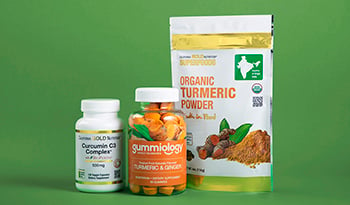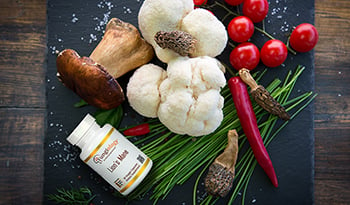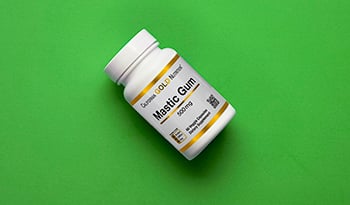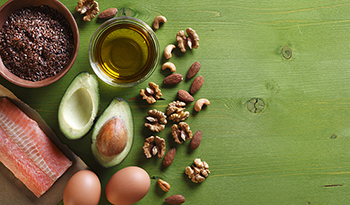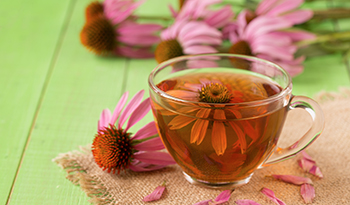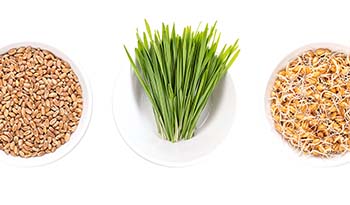Sfruttare il potere salutistico delle piante con i polifenoli

Forse non ve ne rendete conto, ma sicuramente avrete già sentito parlare di polifenoli. Sono regolarmente presenti nei servizi giornalistici che trattano i più recenti superalimenti. Il motivo per cui il vino rosso e il cioccolato fondente hanno acquisito la fama di "buoni per voi" è il loro contenuto di polifenoli.
Ma prima di fare il pieno di superalimenti che fanno notizia, prendetevi un po' di tempo per andare oltre i titoli dei giornali e avere un quadro più completo di cosa sono i polifenoli, dove trovarli e cosa possono fare per voi.
Ecco i dettagli.
Cosa sono i polifenoli?
I polifenoli sono composti presenti in natura negli alimenti vegetali come semi, frutta, spezie, legumi e verdure. Questi composti conferiscono alle piante il loro colore e svolgono un ruolo protettivo, difendendole da parassiti, infezioni, sostanze chimiche tossiche e radiazioni ultraviolette. I polifenoli aiutano anche a proteggere una pianta dallo stress ossidativo (che è l'effetto dei sottoprodotti nocivi creati durante i normali processi chimici).
Tipi di polifenoli
I polifenoli sono raggruppati in quattro classi, in base alla loro struttura chimica.
Acidi fenolici
Questi composti si trovano in abbondanza negli alimenti vegetali e vengono assorbiti facilmente attraverso le pareti dell'intestino. Tè, mais, cereali, prugne, uva, bacche, vino rosso, kiwi, prugne, mele e ciliegie contengono tutti acidi fenolici.
Stilbeni
Solitamente sintetizzata dalle piante solo in risposta a infezioni o lesioni, questa classe di polifenoli non è comunemente presente nella dieta umana. Uno degli stilbeni più noti è il resveratrolo , le cui fonti alimentari principali sono l'uva rossa, le arachidi e alcuni frutti di bosco. Il resveratrolo dell'uva è contenuto principalmente nella buccia. Poiché il vino rosso viene fermentato con le bucce dell'uva per un periodo di tempo più lungo rispetto a quello bianco, il vino rosso contiene più resveratrolo.
Lignani
Le fonti alimentari di lignani includono frutta, cereali, alghe, legumi, cereali e alcune verdure. La fonte naturale più ricca di lignani è costituita dai semi di lino . Può essere difficile ottenere molti lignani dall'alimentazione, a meno che non li si assuma con un integratore alimentare. Alcuni lignani sono fitoestrogeni, composti di origine vegetale che agiscono come gli estrogeni nell'organismo.
Flavonoidi
I flavonoidi sono composti vegetali responsabili dei colori vivaci di frutta, foglie, fiori e verdure. Degli 8.000 polifenoli identificati negli alimenti vegetali, 4.000 appartengono alla classe dei flavonoidi.
6 Categorie di flavonoidi
Poiché ne esistono molte varietà, i flavonoidi sono suddivisi in sei sottoclassi:
- I flavonoli sono noti per le loro proprietà antiossidanti . Un antiossidante è un composto chimico che protegge le cellule dagli effetti dannosi dei radicali liberi (molecole create come sottoprodotti quando l'organismo scompone gli alimenti o è esposto a sostanze inquinanti come le radiazioni o il fumo di sigaretta). Trovati in gran parte nella buccia di frutta e verdura, la funzione principale dei flavonoli è quella di difendere le piante dalle radiazioni ultraviolette. La quercetina è un flavonoide comune appartenente a questa sottoclasse. Le fonti alimentari includono il tè , cavolo, uva, bacche, cipolle, mele, lattuga e pomodori.
- I flavoni agiscono come pesticidi naturali, proteggendo le foglie dagli insetti dannosi. Si ritiene che questi composti svolgano un ruolo di rilassamento dei vasi sanguigni costretti. Le fonti alimentari includono vino rosso, bucce di frutta (compresi i pomodori), grano saraceno e peperoni rossi.
- I flavanoni hanno proprietà antinfiammatorie. Si trovano negli agrumi come lime, limoni, arance e pompelmi.
- I flavanoli (da non confondere con i flavonoli) sono comunemente chiamati catechine. Le fonti alimentari includono cacao, uva, litchi, tè nero, tè verde, e le fragole.
- Le antocianine danno colore alle piante rosse, blu e viola. Si trovano principalmente nella buccia dei frutti di bosco (mirtilli, mirtilli, fragole, more), nell'uva rossa o viola e nel vino rosso.
- Gli isoflavoni possono contribuire a mantenere equilibrati i livelli di estrogeni nell'organismo. Simili agli estrogeni nella composizione chimica, gli isoflavoni non solo possono aumentare i livelli bassi di estrogeni, ma possono anche bloccare lo sviluppo di livelli elevati. La fonte alimentare principale è costituita da legumi come soia, arachidi, ceci e fave .
Benefici dei polifenoli per la salute
Il consumo di polifenoli sembra innescare una risposta nell'organismo che crea una certa resistenza allo stress e una protezione cellulare. I composti polifenolici hanno proprietà antiossidanti e antinfiammatorie . Quindi, mentre le piante usano i polifenoli per difendere e preservare la loro salute, voi potete consumare questi stessi composti a vostro vantaggio. Ecco alcuni dei potenziali benefici dei polifenoli per la salute.
1. Aiutano a regolare gli zuccheri nel sangue
Polifenoli come quercetina, il resveratroloe l'acido ferulico possono influire sulla glicemia in diversi modi, tra cui bloccando l'assorbimento del glucosio (zucchero) nell'intestino o il suo assorbimento in altre parti del corpo.
- I polifenoli della cipolla, in particolare la quercetina, hanno dimostrato un forte effetto antidiabetico.
- È stato dimostrato che l'acido ferulico, un polifenolo presente in abbondanza nelle verdure e nella crusca di mais, aumenta l'assorbimento del glucosio e può migliorare la risposta ai farmaci antidiabetici.
- La mancanza di insulina efficace gioca un ruolo fondamentale nello sviluppo del diabete e il resveratrolo può diminuire la secrezione di insulina e ritardare l'insorgenza dell'insulino-resistenza. Le ricerche sul resveratrolo rivelano anche il suo potenziale di inibizione delle alterazioni renali dovute al diabete (una condizione chiamata nefropatia diabetica).
2. Salute del cuore
Una dieta ricca di polifenoli può contribuire a proteggere il cuore. I polifenoli aiutano a difendere le molecole di colesterolo dai danni causati dai radicali liberi. Inibendo questo danno, i polifenoli possono prevenire l'aterosclerosi (la condizione in cui le placche si formano nelle arterie). Ridurre l'infiammazione e agire contro le piastrine (cellule che possono unirsi per formare un coagulo di sangue) sono altri modi in cui i polifenoli possono contribuire alla salute cardiovascolare.
- Ricerche sulla quercetina dimostrano che può inibire la rottura delle placche aterosclerotiche che precede la formazione di coaguli di sangue.
- Le catechine contenute nel tè hanno dimostrato di resistere ai cambiamenti delle cellule delle pareti delle arterie, contribuendo forse a rallentare la formazione di una placca.
- Studi sulle catechine del cioccolato fondente hanno dimostrato che questi polifenoli possono contribuire ad aumentare i livelli di HDL (il colesterolo "buono").
- La ricerca rivela che il consumo di resveratrolo nel vino rosso o nel succo d'uva può impedire alle piastrine di riunirsi per creare un coagulo di sangue. Anche la costrizione dell'arteria coronaria, che provoca un'ostruzione, può essere prevenuta con il consumo di vino rosso o di succo d'uva.
3. Proprietà antiossidanti e antinfiammatorie
La ricerca ha dimostrato che i polifenoli, in particolare il resveratrolo , possono avere effetti anticancerogeni grazie alle loro proprietà antiossidanti . Il resveratrolo può anche contribuire a combattere l'infiammazione.
4. Potenziare la salute del cervello
I polifenoli possono svolgere un'azione protettiva sul cervello grazie alla loro capacità di attraversare la barriera emato-encefalica che controlla l'ingresso di sostanze nel cervello.
- La ricerca ha dimostrato che i polifenoli possono svolgere un ruolo significativo nel ritardare l'insorgenza della malattia di Alzheimer.
- Alcuni studi rivelano che l'acido ferulico contenuto nella crusca di mais può essere utile nella malattia di Alzheimer grazie alle sue proprietà antiossidanti e antinfiammatorie.
- È stato dimostrato che le catechine hanno un ruolo terapeutico nel trattamento della malattia di Parkinson grazie all'attività antiossidante.
5. Promuovere la salute delle ossa
La ricerca continua a dimostrare che i polifenoli possono contribuire a rallentare la diminuzione della densità minerale ossea che porta all'osteoporosi. Uno studio sulla genisteina e sulla daidzeina ha suggerito che l'integrazione con questi isoflavoni, che si trovano in abbondanza nei legumi, può contribuire alla prevenzione della perdita ossea.
Il consumo di un'ampia gamma di polifenoli nella dieta - sotto forma di alimenti o di integratori, o di una combinazione di entrambi - è un ottimo modo per migliorare la salute generale e ridurre il rischio di sviluppare alcune condizioni di salute.
ESONERO DI RESPONSABILITÀ:Questo Centro Benessere non intende fornire diagnosi...














































































 Indice
Indice



